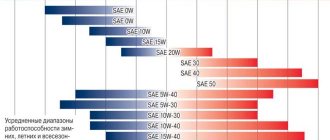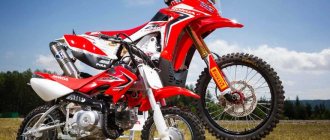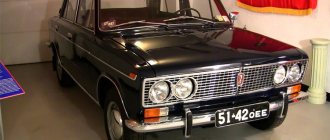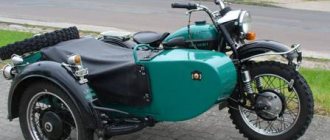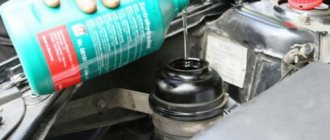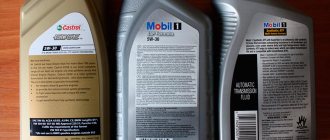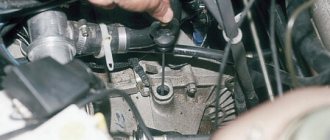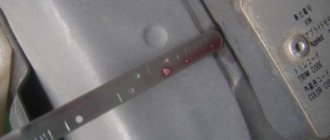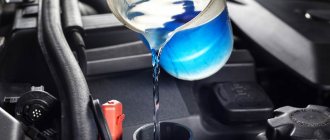Differences between liquids Dexron 2 and 3, which are used in power steering and for automatic transmissions, lies in their fluidity indicators, the type of base oil, as well as temperature characteristics. In general terms, we can say that Dextron 2 is an older product released by General Motors, and accordingly, Dextron 3 is a newer one. However, you cannot simply replace the old fluid with a new one. This can only be done by observing the manufacturer’s tolerances, as well as the characteristics of the liquids themselves.
Generations of Dexron liquids and their characteristics
To understand what are the differences between Dexron II and Dexron III, as well as what is the difference in one and the other transmission fluid, it is necessary to briefly look at the history of their creation, as well as the characteristics that have changed from generation to generation.
Dexron II characteristics
This transmission fluid was first released by General Motors in 1973. Its first generation was called Dexron 2 or II C. It was based on mineral oil from the second group according to the API classification - American Petroleum Institute. In accordance with this standard, the base oils of the second group were obtained by using hydrocracking. In addition, they contain at least 90% saturated hydrocarbons, less than 0.03% sulfur, and also have a viscosity index ranging from 80 to 120.
Viscosity index is a relative value that characterizes the degree of change in oil viscosity depending on temperature in degrees Celsius, and also determines the flatness of the kinematic viscosity curve versus ambient temperature.
The first additives that began to be added to transmission fluid were corrosion inhibitors. In accordance with the license and designation (Dexron IIC), the composition on the packaging is designated starting with the letter C, for example, C-20109. The manufacturer indicated that it is necessary to change the fluid to a new one every 80 thousand kilometers. However, in practice it turned out that corrosion occurs much faster, so General Motors began producing the next generation of its products.
So, in 1975, transmission fluid Dexron-II (D) . It was made on the same base mineral oil of the second group , but with an improved complex of anti-corrosion additives, in particular, preventing corrosion of the joints of oil coolers of automatic transmissions. This liquid had a fairly high minimum permissible operating temperature - only -15°C. But since the viscosity remained at a fairly high level, due to the improvement of transmission systems, this began to lead to vibrations when driving some models of new cars.
Beginning in 1988, automakers began replacing automatic transmissions with hydraulic control systems with electronic ones. Accordingly, they needed a different lubricant for automatic transmissions, one with low viscosity, which provides a much higher rate of force transmission (response) due to better fluidity.
In 1990, Dexron-II (E) (the specification was revised in August 1992, re-release began in 1993). His base was the same - the second API group. However, due to the use of a more modern additive package, gear oil is now considered synthetic! The lowest temperature for this liquid was reduced and became -30°C. Improved performance is the key to smooth automatic transmission gear shifting and increased service life. The license designation begins with the letter E, for example E-20001.
Dexron III characteristics
For Dextron 3 transmission fluids, the base oils belong to group 2+ , which is characterized by increased class 2 characteristics; in particular, the hydrotreating method is used in production. The viscosity index here is increased , and its minimum value ranges from 110...115 units and above . That is, Dexron 3 has a completely synthetic base .
The first generation was Dexron-III (F) . In fact, this is just an improved version of Dexron-II (E) with the same temperature ratings of -30°C. The disadvantages include low durability and poor shear stability, and fluid oxidation. This composition is designated with the letter F at the beginning, for example, F-30001.
The second generation - Dexron-III (G) , appeared in 1998. The improved composition of this fluid has completely overcome the problems of vibration when the car is moving. The manufacturer also recommended it for use in hydraulic power steering (power steering), some hydraulic systems, as well as in rotary air compressors where a high level of fluidity at low temperatures is required.
The minimum operating temperature at which Dextron 3 liquid can be used has become -40°C . This composition began to be designated with the letter G, for example, G-30001.
Third generation - Dexron III (H) . It was released in 2003. This fluid has a synthetic base and an even more improved additive package. Thus, the manufacturer claims that it can be used as a universal lubricant for all automatic transmissions with and without a controlled torque converter lock-up clutch, that is, the so-called GKÜB for gear shift lock-up. It has a very low viscosity in cold weather, so it can be used down to -40°C.
Popular brands specifications
Mannol Dexron 3
Mannol Dexron 3 automatic is considered a multi-purpose oil for automatic transmissions. This Manol mixture is also used in power steering, hydraulic clutches, and spinning mechanisms.
Just like all, without exception, Dextron oils have a reddish tone. The manufacturer has worked hard on the combination of additives and synthetic components, the components of which help improve the fractional characteristics at the time of gear shifting.
Oil from a manufacturer in Germany has high low-temperature characteristics, excellent antioxidant properties, and stable chemical composition throughout the entire period of operation. It is not advisable to use copper elements as a lubricant; the liquid is absolutely neutral to all other alloys and materials.
The products have all possible tolerances:
- ZF-TE-ML 09/11/14, ALLISON C4/TES 389, GM DEXR. III H/G/F, FORD M2C138-CJ/M2C166-H and others.
Castrol DEXRON
Castrol DEXRON is a low-viscosity mixture for automatic transmissions and is designed for use in modern gearboxes. It has proven itself to be the mixture with the greatest fuel economy.
Castrol production is established in Germany. The oil consists of high-quality base mixtures with an optimal set of additives. Has positive feedback from GM and Ford management, exceeds the requirements of the Japanese JASA 1A specification. In cases where it is not possible to purchase Dextron ATF for the Japanese, you can safely use oil from Castrol - Dexron 6.
Meets all major standards:
- Honda/Acura, Hyundai/Kia SP, Nissan Matic, Suzuki AT Oil, Mitsubishi SP, Mazda ATF, Toyota and Subaru.
Mobil 3 ATF oil
Mobil ATF 320 Premium oil has a mineral structure. Used in power steering and automatic transmissions with GM Dexron 3 approval standard.
Mobil absolutely complies with all types of transmission seals in automatic transmission mechanisms. Compatible with all red liquids of the Dexron III specification. The composition is not recommended for use on northern continents, where temperatures drop to -30 degrees. Mobil oil with Dextron No. 3 specification can also be used in power steering mechanisms.
Meets Ford Mercon, ATF Dex standards. III, ZF TE-ML and Dex. 3
Motul Multi ATF
Motul Multi ATF is 100% synthetic fluid. A universal oil designed for automatic transmissions manufactured since 2000.
It is also possible to use it in hydrostatic transmissions, power steering, and other mechanisms (including ATF) that support standard Mercon and Dexron. Motul occupies a leading position in chemical composition and viscosity, temperature performance, stability functions, and meets all requirements from GM.
It is not recommended for use in hydraulic power steering automatic transmissions, since the fluid was created specifically for automatic transmissions. Has many approvals and positive reviews.
It has proven itself as a reliable gear oil. The only drawback of the Motul Multi premium mixture is its price.
Meets the basic standards of MAZDA, CHRYSLER, JAGUAR, RENAULT Elfmatic, Renaultmatic D2 D3, Acura/HONDA, Lexus/TOYOTA ATF, Audi, GM DEXRON 2 and 3, FORD, BMW and MITSUBISHI.
Differences between Dexron 2 and Dexron 3 and replaceability
The most popular questions regarding the operation of Dexron 2 and Dexron 3 transmission fluids are whether they can be mixed and whether one oil can be used instead of the other. Since improved characteristics should undoubtedly affect the improvement of the operation of the unit (be it power steering or automatic transmission).
| Replaceability of Dexron 2 and Dexron 3 | |
| Substitution/mix | Conditions |
| For automatic transmission | |
| Dexron II D → Dexron II E |
|
| Dexron II D → Dexron III F, Dexron III G, Dexron III H |
|
| Dexron II E → Dexron III F, Dexron III G, Dexron III H |
|
| Dexron III F → Dexron III G, Dexron III H |
|
| Dexron III G → Dexron III H |
|
| For power steering | |
| Dexron II → Dexron III |
|
Difference between Dexron 2 and Dexron 3 for automatic transmission
Before adding or mixing different types of transmission fluids, you need to find out what type of fluid the car manufacturer recommends using. Usually this information is in the technical documentation (manual); for some cars (for example, Toyota) it may be indicated on the gearbox dipstick.
Ideally, only a lubricant of the specified class should be poured into an automatic transmission, despite the fact that from class to class of liquid there have been improvements in characteristics that affect the duration of its operation. Also, do not mix, observing the frequency of replacement (if replacement is envisaged at all, since many modern automatic transmissions are designed to operate with one fluid throughout the entire period of their operation, only with the addition of fluid as it burns out).
Next, you need to remember that mixing liquids based on mineral and synthetic bases is allowed with restrictions! So, in an automatic transmission they can be mixed only if they contain the same type of additives. In practice, this means that you can mix, for example, Dexron II D and Dexron III only if they were produced by the same manufacturer. Otherwise, chemical reactions may occur in the automatic transmission with the formation of sediment, which will clog the thin channels of the torque converter, which can lead to its malfunction.
Typically, ATF fluids made with mineral oil are red in color, while fluids made with synthetic base oil are yellow. Similar markings apply to canisters. However, this requirement is not always observed, and it is advisable to read the composition on the packaging.
The difference between Dexron II D and Dexron II E is the temperature viscosity. Since the operating temperature of the first liquid is up to -15°C, and that of the second is lower, up to -30°C. In addition, synthetic Dexron II E is more durable and has more stable performance characteristics throughout its entire service life. That is, replacing Dexron II D with Dexron II E is allowed, however, provided that the machine will be used in severe frosts. If the air temperature does not drop below –15°C, then there is a risk that at high temperatures the more liquid Dexron II E will begin to seep through the gaskets (seals) of the automatic transmission, and may simply leak out of it, not to mention the wear of parts.
When replacing or mixing Dextron fluids, it is necessary to take into account the requirements of the automatic transmission manufacturer, whether it allows you to reduce friction when replacing ATF fluid, since this factor can negatively affect not only the operation of the unit, but also its durability, and given the high cost of the transmission, this is significant argument!
Replacing Dexron II E with Dexron II D is definitely unacceptable , since the first composition is synthetic and has a lower viscosity, and the second is mineral-based and has a higher viscosity. In addition, Dexron II E is characterized by greater efficiency of modifiers (additives). Thus, Dexron II E makes sense to use only in areas with significant frosts, especially considering that Dexron II E is much more expensive than its predecessor (due to more expensive manufacturing technology).
As for Dexron II, its replacement with Dexron III depends on the generation. Thus, the first Dexron III F was not much different from Dexron II E, so replacing the second “Dextron” with a third is quite acceptable, but not vice versa , for similar reasons.
As for Dexron III G and Dexron III H , they have even greater viscosity and a set of modifiers that reduce friction. This means that in theory they can be used instead of Dexron II, but with some limitations. In particular, if the equipment (automatic transmission) does not allow a decrease in the friction properties of the ATF fluid, replacing Dextron 2 with Dextron 3, as a more “advanced” composition, can lead to the following negative consequences:
- Increased gear shift speed. But it is precisely this advantage that distinguishes an automatic transmission with electronic control from an automatic transmission with hydraulic control.
- Jerks when changing gears. In this case, the friction discs in the automatic transmission will suffer, that is, wear out more.
- Problems may arise with the electronic control of the automatic transmission. If switching takes longer than expected, the electronic control systems can transmit information about the corresponding error to the electronic control unit.
In fact, it makes sense to use Dexron III transmission fluids only in northern regions, where the temperature of using a car with an automatic transmission can reach -40°C. If such a liquid is intended to be used in the southern regions, then information about approvals should be read separately in the documentation for the car, since this can only harm the automatic transmission .
Thus, the popular question about which is better - Dexron 2 or Dexron 3 in itself is incorrect, because the difference between them exists not only in terms of generations, but also in purpose. Therefore, the answer to it depends, firstly, on the oil recommended for the automatic transmission, and secondly, on the operating conditions of the machine. Therefore, you cannot blindly fill in “Dextron 3” instead of “Dextron 2” and think that this will only make the automatic transmission better. First of all, you need to follow the car manufacturer's recommendations!
Dextron 2 and 3 differences for power steering
As for replacing the power steering fluid, similar reasoning applies. However, there is one subtlety here, which is that for the power steering system, the viscosity of the fluid is not so important, because the temperature in the power steering pump does not rise above 80 degrees Celsius. Therefore, the tank or lid may have the inscription “Dexron II or Dexron III” on it. This is due to the fact that the power steering does not have thin torque converter channels, and the forces transmitted by the fluid are much less.
So, by and large, it is possible to replace Dextron 3 in the hydraulic booster instead of Dextron 2, although not in all cases. The main thing is that the fluid meets the criteria for low-temperature viscosity (a cold start with viscous oil, in addition to increased wear of the pump blades, is dangerous due to high pressure and leakage through the seals)! As for reverse replacement, it is not allowed for the reasons described above. Indeed, depending on the ambient temperature, the power steering pump may hum.
15 best power steering fluids
Review of the 15 best power steering fluids that can be filled. PSF, ATF, Dextron - which fluid and price is best for power steering. More details
When using power steering fluid, you should focus on the minimum pumping temperature and kinematic viscosity of the oil (for the longevity of its operation, it should not exceed 800 m㎡/s).
What is the difference between Dexron IIE and Dexron IID?
During automatic transmission operation, there is practically no difference in the performance properties of Dexron IIE and IID fluids. There are significant differences between them at low temperatures, while the box has not yet warmed up.
The viscosity of Dexron IID at -40 °C is 45,000 mPa s, and Dexron IIE at the same temperature is 20,000 mPa s. It is clear from this that it is much easier for the engine to rotate an automatic transmission with Dexron IIE when “cold”. Throughout its entire service life, the properties of this liquid are more stable due to the synthetic base.
Dexron IIE can replace Dexron IID on any equipment (but not vice versa), since it does not differ in the effectiveness of modifiers, but has improved low-temperature properties.
The difference between Dexron and ATF
In terms of the interchangeability of fluids, car owners also wonder not only about the compatibility of Dexron 2 3, but also what is the difference between Dextron 2 oil and ATF. In fact, this question is incorrect, and here's why... The abbreviation ATF stands for Automatic Transmission Fluid, which means automatic transmission fluid. That is, all transmission fluids used in automatic transmissions fall under this definition.
As for Dexron (regardless of generation), it is just a name for a group of technical specifications (sometimes referred to as a brand) for automatic transmission fluids created by General Motors (GM). This brand produces not only fluids for automatic transmissions, but also for other mechanisms. That is, Dexron is a generic name for specifications that have been adopted over time by various manufacturers of their respective products. Therefore, you can often find the designations ATF and Dexron on the same canister. After all, in fact, Dextron fluid is the same transmission fluid for automatic transmissions (ATF). And they can be mixed, the main thing is that their specifications belong to the same group. As for the question of why some manufacturers write Dexron on canisters and others ATF, the answer comes down to the same definition. Dexron fluids are manufactured to General Motors specifications, while others are manufactured to other manufacturers' specifications. The same applies to the color marking of canisters. It in no way indicates a specification, but only informs (and not always) what type of oil was used as a base oil in the production of a particular transmission fluid presented on the counter. Typically, red means that the base used was mineral oil, and yellow means that it was synthetic.
Types and types of Dexron liquids
Let's start with the fact that today you can find fluids ranging from Dexron 2, Dexron IID or Dexron 3 to Dexron 6. In fact, each type is a separate generation of transmission fluid, widely known as Dexron. The development belongs to the concern General Motors (GM), which in 1968 created its own transmission fluid for automatic transmissions, Dexron.
Let us note that in those years the auto industry was at a stage of active development, large automakers everywhere developed tolerances and standards for oils and transmission fluids. Subsequently, these tolerances and specifications became a mandatory requirement for third-party companies producing technical fluids for cars.
- Let's return to Dextron. After the first generation of such fluids entered the market, just 4 years later GM was forced to develop the second generation of Dextron.
The reason is that the first generation actively used whale oil as a friction modifier, and the transmission oil itself on this basis quickly became unusable due to high heat in the automatic transmission. A new formula was supposed to solve the problems, which became the basis of Dexron IIC.
In fact, whale oil was replaced with jojoba oil as a friction modifier, and the product's heat resistance was also improved. However, with all the advantages, the composition had one serious drawback - severe corrosion of automatic transmission elements.
For this reason, corrosion inhibitors began to be added to the transmission fluid to avoid the active appearance of rust. The result of such improvements was the appearance in 1975 of the Dexron IID product. Further, during operation, it turned out that the transmission fluid, due to the addition of an anti-corrosion package, tends to accumulate moisture (hygroscopicity), which led to a rapid loss of properties.
For this reason, they quickly stopped using Dexron IID, releasing the product Dexron IIE, filled with active additives that work against moisture and corrosion. It is noteworthy that this generation of liquid has become semi-synthetic.
Moreover, having convinced itself of its effectiveness, after a short period of time the concern released a fundamentally new liquid with improved performance characteristics. First of all, while earlier generations were mineral or semi-synthetic based, the new Dexron 3 ATF was made from a synthetic base.
This solution turned out to be resistant to high heat, had excellent lubricating and protective properties, and remained fluid at low temperatures (up to -30 degrees Celsius). It was the third generation that became truly universal and began to be widely used in automatic transmissions, power steering, etc.
- Today, the latest generation is Dexron VI (Dextron 6), developed for the six-speed Hydra-Matic 6L80 automatic transmission. The product has improved lubricating properties, reduced kinematic viscosity, resistance to foaming and corrosion.
Moreover, the manufacturer positions such a liquid as a composition that does not require replacement. In other words, such oil is poured into the automatic transmission for the entire service life of the unit.
Of course, in reality, the oil in the box needs to be changed every 50-60 thousand kilometers, but it is obvious that the properties of Dextron 6 are noticeably improved. As practice shows, Dextron VI also loses its properties over time, but it needs to be changed less often than the outdated Dextron III.
- Please note that different manufacturers began to produce automatic transmission fluids quite a long time ago, and the products are produced under the Dexron brand. As for GM, the concern has been producing only this type of fluid since 2006, while other oil manufacturers continue to produce Dextron IID, IIE, III, etc.
As for GM, the corporation is not responsible in any way for the quality and properties of fluids of previous generations, although they continue to be produced according to the Dexron standard. It can also be noted that today Dexron fluids can be standard or HP (high performance) for automatic transmissions that operate in difficult conditions.
There are also Dexron Gear Oils for differentials and clutches, Dexron Manual Transmission Fluid for manual transmissions, Dexron Dual Clutch Transmission Fluid for dual-clutch robotic gearboxes, Dextron for power steering, as well as other units and mechanisms. There is information that General Motors is testing the latest generation of fluid for use as a transmission oil for CVTs.
Interchangeable between Dexron II and Dexron III
The most popular question related to the operation of Dexron II and Dexron III transmission fluids is whether it is possible to mix them and use one oil instead of the other.
Dextron 3 liquids differ significantly from their predecessors. In all respects they have improved characteristics. However, before you fill in such oil or mix it with another, you need to find out what type of fluid the car manufacturer recommends. Usually this information is in the technical documentation for the car.
It should be remembered that mixing liquids based on mineral and synthetic bases is not recommended in order to avoid adverse chemical reactions of the additives.
As a last resort, it is allowed to mix Dexron II and Dexron III oils produced by the same manufacturer - they have a similar package of additives.
It is possible to add liquid of a later standard (Dextron 3 to Dextron 2), but not vice versa. However, if the equipment does not allow a decrease in the oil friction coefficient due to increased additives, then Dextron 2 cannot be replaced with Dextron 3.
It is also worth considering climatic conditions. Dexron II liquids are not designed for cold winters, so in northern regions it is necessary to use only Dexron III and not mix them with anything else.

